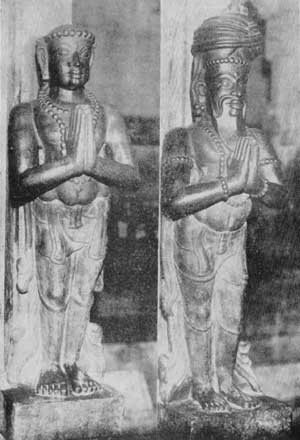
|
||||||||||
|
| ||||||||||
Temple Tiruppanis (Part Two)Part 1 | Part 2 | Part 3 | Part 4 | Part 5 | Part 6
Some mention has to be made of the magnificent services of these three sannyasins who have re-built this great temple of three corridors in black granite. The Shanmukha Vilasa, the noble frontal mantapa of enormous proportions which over-looks the sea is another edifice, also the extensive Vellaikkal Mandapa which faces the sea. The advent of Mauna Swami, as the first of the three was called, was in 1868. He had come from a place unknown, nor is his proper name on record. He kept a vow of silence, and was known on that account as Mauna Swami. He realised that the temple needed an urgent renovation, and he dedicated his life for the purpose. He would sit at the portal of the Gopura, and to the queries put to him he used to reply by writing the answer on the sand before him. His bestowal of vibhuti to worshippers earned donors to the Tiruppani funds. When he came, Mauna Swami found the great western Gopuram door-way half-concealed by the rolling sand-dunes of the sea. He moved the sand away and his next service was to give a coating of oil to this great door. The second task he set himself to was the renovation of the second eastern Gopuram. As this work progressed, he was joined in 1872 by another ascetic who had arrived on a pilgrimage from Kasi (Benares), and who for that reason was known as 'Kasi Swami'. He went about different places collecting grain and money and helped Mauna Swami with the requisite sinews-of-war. The work was now in active progress. Entrusting the work to Kasi Swami, the Mauna Swami now sailed to Ceylon by a country boat and he was helped by certain merchants there and at Kulasekharanpattinam with money. He returned soon with about Rs. 5,000. These funds were, however insufficient. With the amount on hand, as a nucleus, he instituted a Hundial Collection at the western Gopuram door as well as daily collections of handful of rice from every house. This hundial collection is still being continued to augment the resources of a Tirupani fund and which is separately maintained. Part 1 | Part 2 | Part 3 | Part 4 | Part 5 | Part 6
|
